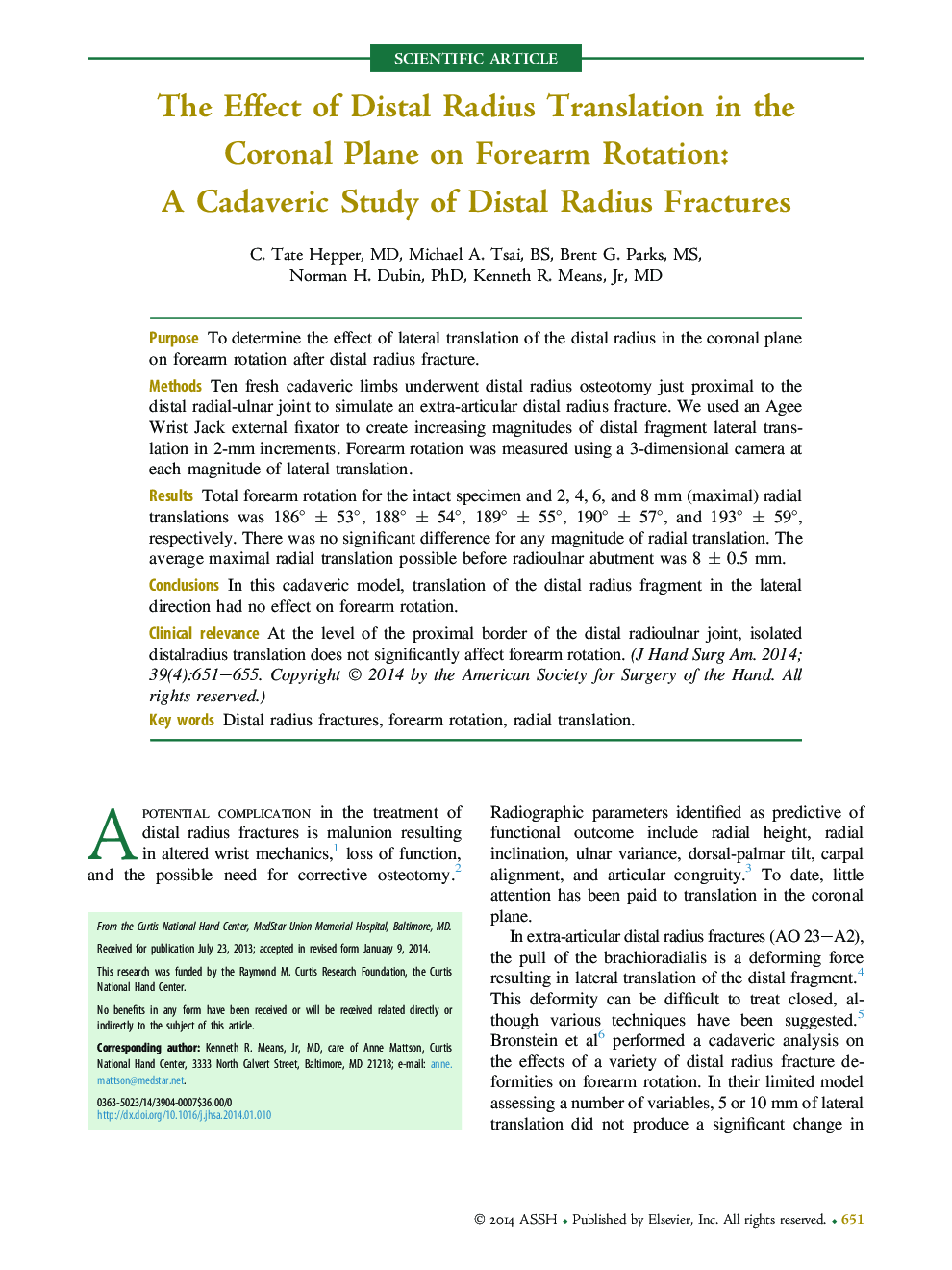| Article ID | Journal | Published Year | Pages | File Type |
|---|---|---|---|---|
| 4067675 | The Journal of Hand Surgery | 2014 | 5 Pages |
PurposeTo determine the effect of lateral translation of the distal radius in the coronal plane on forearm rotation after distal radius fracture.MethodsTen fresh cadaveric limbs underwent distal radius osteotomy just proximal to the distal radial-ulnar joint to simulate an extra-articular distal radius fracture. We used an Agee Wrist Jack external fixator to create increasing magnitudes of distal fragment lateral translation in 2-mm increments. Forearm rotation was measured using a 3-dimensional camera at each magnitude of lateral translation.ResultsTotal forearm rotation for the intact specimen and 2, 4, 6, and 8 mm (maximal) radial translations was 186° ± 53°, 188° ± 54°, 189° ± 55°, 190° ± 57°, and 193° ± 59°, respectively. There was no significant difference for any magnitude of radial translation. The average maximal radial translation possible before radioulnar abutment was 8 ± 0.5 mm.ConclusionsIn this cadaveric model, translation of the distal radius fragment in the lateral direction had no effect on forearm rotation.Clinical relevanceAt the level of the proximal border of the distal radioulnar joint, isolated distal radius translation does not significantly affect forearm rotation.
